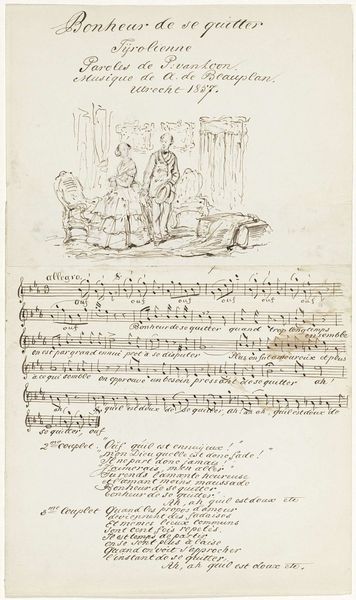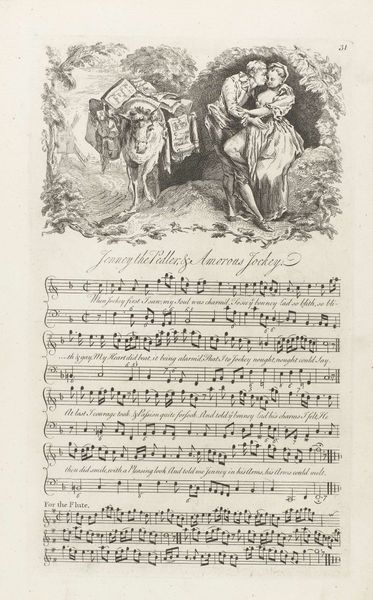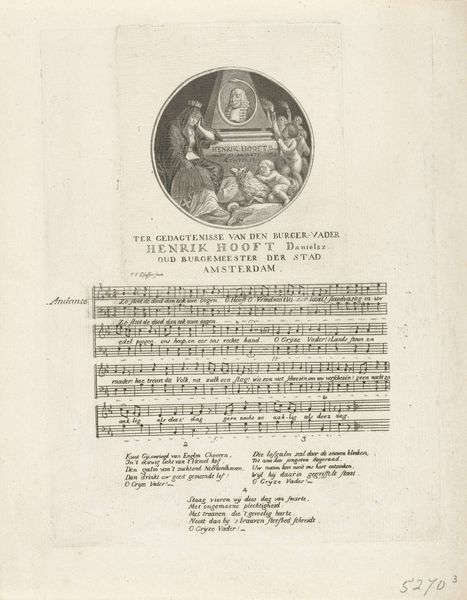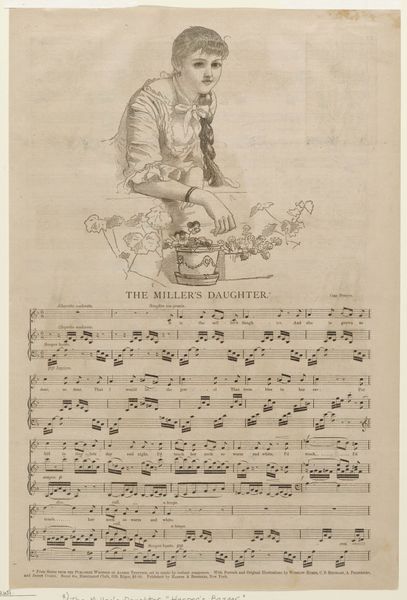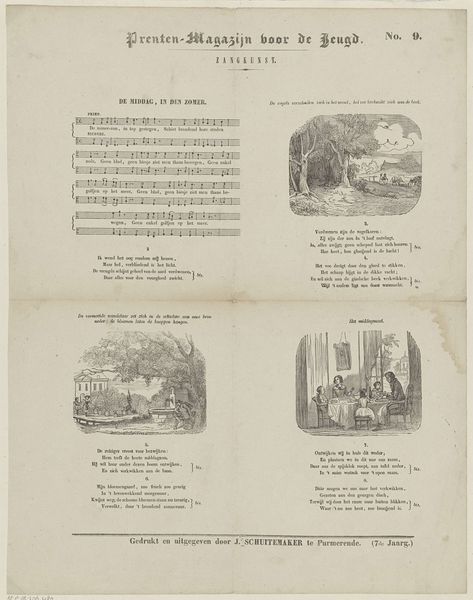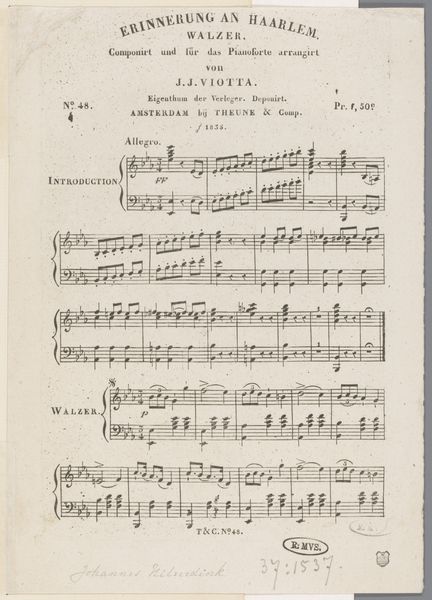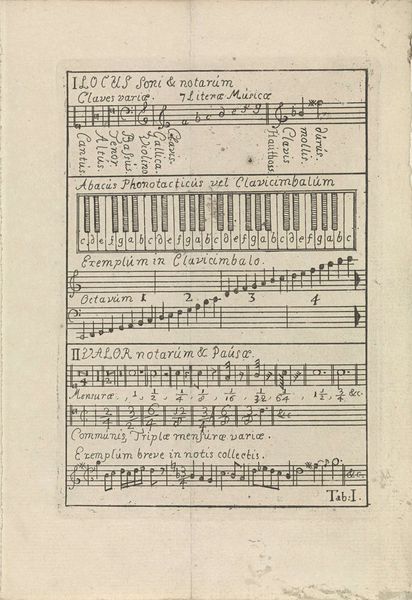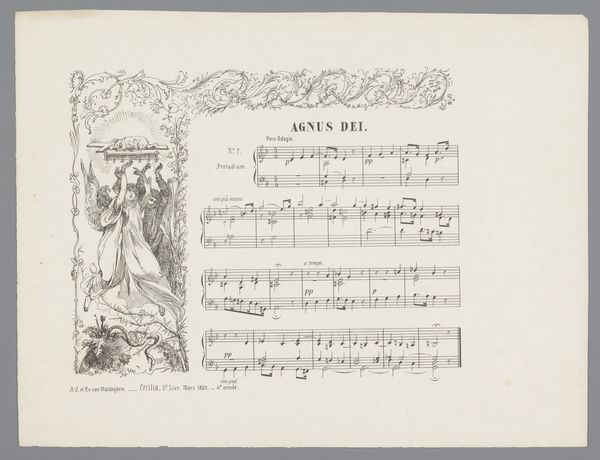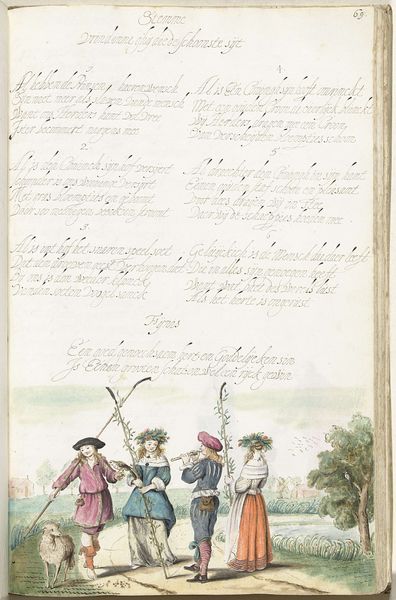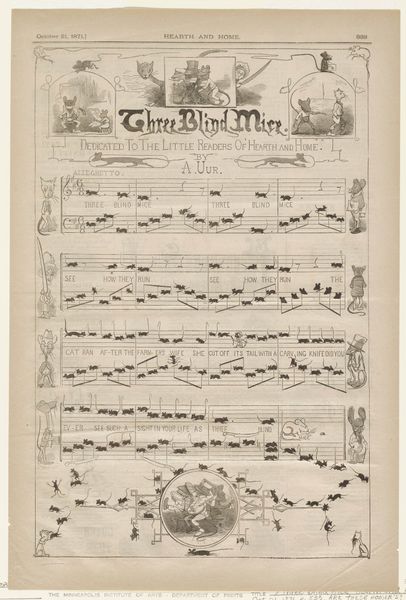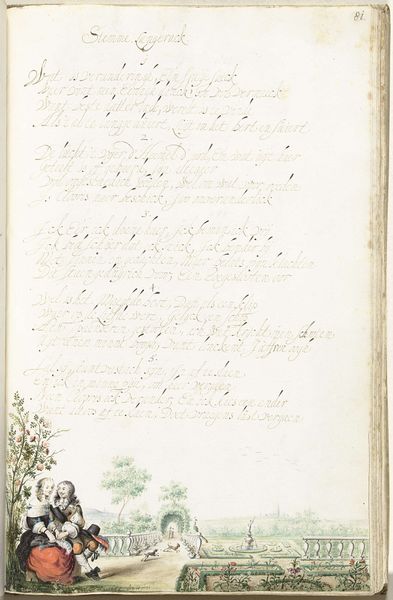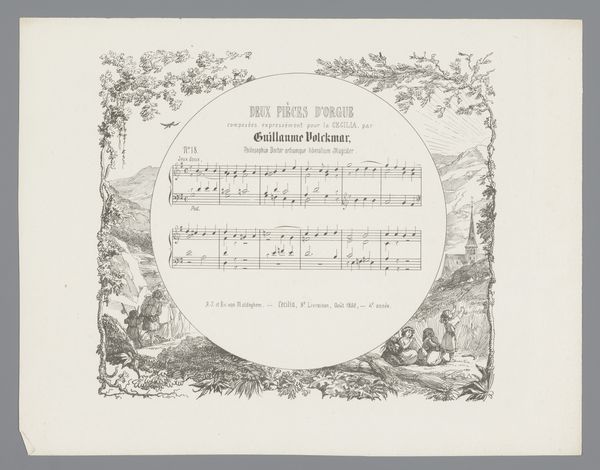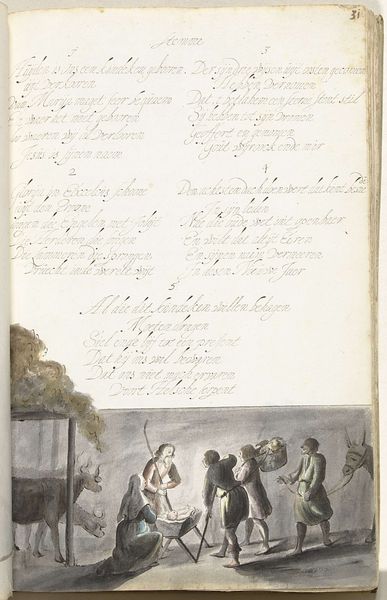
drawing, print, paper, pen, engraving
#
drawing
#
aged paper
#
narrative-art
#
baroque
# print
#
old engraving style
#
paper
#
pen work
#
sketchbook drawing
#
pen
#
genre-painting
#
history-painting
#
engraving
Dimensions: height 326 mm, width 199 mm
Copyright: Rijks Museum: Open Domain
Editor: So this piece is called "Straatscène," which translates to "Street Scene." It was made between 1737 and 1740 by George Bickham, and it's a drawing and engraving on paper. What immediately strikes me is the almost diagrammatic layout, this strange layering of musical notes under a somewhat lively street scene. What do you see in this piece? Curator: Indeed, the visual organization is the key. Let's begin by dissecting its formal elements. Observe the clear separation of the image into distinct zones: the figural vignette above and the musical notations below. What is the effect of juxtaposing these normally discrete representational modes? Editor: Well, it's like the street scene is illustrating the music. The people seem to be performing or responding to it. But there's also something unsettling about it, how precisely everything is laid out. Curator: Precisely. Consider the lines themselves. Bickham's use of engraving produces a certain coldness, a starkness. Do the figures have warmth? Is there softness to this scene, or does it primarily illustrate line and form? Is the artistry driven by representing content, or rendering design? Editor: I see what you mean. The figures do seem stiff, posed. It is about the form as a whole. Even with the musical notes, it seems more about how they look on the page. I noticed the title implies that the scene depicts an actual ballad singer; are these characters from the ballad? Curator: This reinforces the artwork’s deliberate structural arrangement. How might the textual inclusion further compartmentalize or connect its representational levels? The lettering is as much a visual element, and the scene, the sheet music… everything is constructed for clarity and visual balance. Editor: That’s interesting, considering it depicts something potentially spontaneous. Thanks, seeing it that way clarifies the artist's intentions. Curator: It also forces us to recognize artifice. We find that breaking down each structural component gives it meaning beyond a narrative impression.
Comments
No comments
Be the first to comment and join the conversation on the ultimate creative platform.
